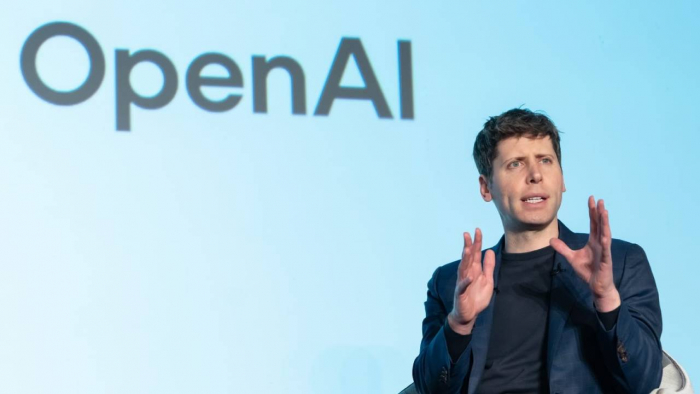Cybersecurity researchers have developed an innovative proof-of-concept attack, a new side-channel attack named the SleepWalk attack. This attack can steal private cryptographic keys by monitoring the normal behavior of the OS and CPU.
Unlike traditional approaches that include analysis of full power traces, application of complex preprocessing, or depending on external synchronization triggers, SleepWalk leverages only a single power spike’s amplitude. The simplicity of this attack enables it to bypass traditional defenses by focusing on hardware/CPU power analysis.
What Is SleepWalk Attack?

The SleepWalk attack is a new side-channel attack that obtains cryptographic keys by measuring the power irregularities that happen when a CPU performs a context switch between processes. The term ‘SleepWalk’ refers to extracting data while the system is sleeping or less guarded, much like how a person might behave during sleepwalking.
A context switch is a process that operating systems perform to save one program’s state and load data from another program into the CPU. This causes the power consumption to surge. And the pattern of the surge is a function of the previous program. The OS decides which program to prioritize and when.
SleepWalk is an advanced method of attack where the attacker does not compromise software directly or dump memory, but accesses sensitive data from the side signals of hardware activity.
How Does It Differ from Traditional Attacks
The SleepWalk attack is different from traditional attacks, such as RAM scraping, core dumps, malware attacks, cache timing, and so on, in these ways:
- Cybercriminals often target cryptographic protections such as those secured by SSL/TLS certificates, but SleepWalk takes a different route. It exploits CPU behavior instead of attacking the encryption itself.
- It is non-invasive and it does not need direct access to the disk or memory.
- SleepWalk does not target application-level vulnerabilities but targets the behavior of the CPU.
- It leverages CPU context switching rather than cache/timing or direct hardware flaws.
- The SleepWalk attack is a more serious threat to cryptographic durability.
From Side-Channels to SleepWalk - A Quick Background
What Are Side-Channel Attacks?
A side-channel attack refers to any method that exploits physical signals, such as power, timing, or electromagnetic radiation, instead of breaking algorithms. It steals secretive information through indirect monitoring. Famous examples of such attacks include Meltdown, Spectre, and the measurement of the power consumption of smartcards.
Meltdown and Spectre
Spectre and Meltdown are CPU flaws that prey on caching policy and speculative execution and exploit severe vulnerabilities in contemporary processors. These flaws enable programs to steal information that the computer handles at a given point in time.
Programs usually don’t have permission to get data from other programs. Yet, malicious software can leverage Spectre and Meltdown to reveal secret information stored in other executing programs’ memory.
Examples are your passwords, which you save in a browser or password manager, and your personal and official files. Spectre and Meltdown work in the cloud, and on phones and personal computers.
Analysis of Smartcards’ Power Consumption
A huge advancement in side-channel attacks is the stealing of the secret key through analysis of a cryptographic device’s power consumption. This technique is known as the Power Analysis Attack, which is one of the most successful and transient side-channel attacks.
The power that a cryptographic system consumes is the main metric to identify the cryptographic algorithms and their secret key and PINs. Statistical analysis of the power consumption measurements of the cryptographic system takes place. Also, the correlation between these measurements and the cryptographic algorithms is analyzed to crack the security.
Attackers have been successful in performing this attack on various cryptographic algorithms, such as AES (Advanced Encryption Standard), ECC (Elliptic Curve Cryptography), DES (Data Encryption Standard), and RSA (Rivest, Shamir, and Adleman). These algorithms run on cryptographic devices, such as smart cards, ASIC (Application-Specific Integrated Circuit), DSP (Digital Signal Processor), FPGA (Field-Programmable Gate Array), and so on.
How the SleepWalk Attack Works
The Role of Context Switching
When a context switch occurs, patterns of power spikes expose information. A context switch involves saving and reloading the registers and executing a pipeline flush to remove pre-loaded instructions. And this leads to greater power consumption than a standard program execution. SleepWalk takes advantage of this power spike by correlating measurements during cryptographic computations.
What is Power Fingerprinting?
Researchers have pointed out that by correctly timing a context switch while running a cipher and measuring the power surge, you can identify each process’s ‘power fingerprint’. This fingerprint can be used to reconstruct cryptographic keys. Older attacks need several measurements to extract data but SleepWalk can be successful with one accurate measurement under the right conditions.
Why SleepWalk Matters for Cybersecurity
The SleepWalk attack is still a theoretical proof-of-concept and is not yet common in real-world threats. But the attack highlights vulnerabilities in:
Cloud environments (shared CPUs)
In multi-tenant cloud setups, one VM (Virtual Machine) might track CPU context switches, which impacts another tenant.
Cryptographic libraries under an intensive workload
High-throughput servers running cryptographically demanding operations may leak patterns that are vulnerable to malicious actors.
IoT (Internet of Things) devices with constrained nodes
Many IoT nodes do not have advanced side-channel defenses, and so, they are particularly vulnerable.
Blueprint for Future Attacks
Sleepwalk is still an experiment, if it undergoes refinement, it could inspire new attack methods. Threat actors could enhance or modify the core methods behind this attack to create new, and possibly more fatal, attacks.
How to Defend Against SleepWalk-Like Attacks
Mitigations are still subject to research, but these are the potential strategies:
- Signal obfuscation: jittering power patterns
- Algorithmic robustness: developing cryptosystems that are side-channel proof
- Physical-layer observation: embedding side-channel defenses at the chip level
- OS-level protections: redesigning process separation in CPUs
Cooperation between hardware vendors, OS developers, and cryptographers is vital to tackle this type of attack.
Key Takeaways
- The SleepWalk attack shows that attackers can access secrets through the physical functionality of even perfect algorithms.
- SleepWalk highlights the cybersecurity race between defenders and attackers. As algorithms tighten, attackers switch to devious hardware-based channels.
- This threat is not at a consumer level today, yet it points out that even common OS processes can be a vulnerability. The discovery of this attack could prompt the development of algorithms that are more immune to traditional and quantum-era attacks.
Conclusion
SleepWalk proves that attackers do not have to probe memory for stealing keys. Existing as well as in-progress encryption algorithms need to become more dependable. However, be confident that the research network is already working on security controls.
So, SleepWalk demonstrates a main aspect in running cryptographic systems: the vulnerability of hardware-level power consumption is a side-channel attack route. The future of encryption and secure software environments relies on resistance against such physical-layer threats.
Thus, SleepWalk reminds us that encryption is not an isolated property, its security has a direct link to the physical systems that operate it. In essence, SleepWalk proves that regarding cryptography, security isn’t merely math, it's physics too!
Post Comment
Be the first to post comment!





